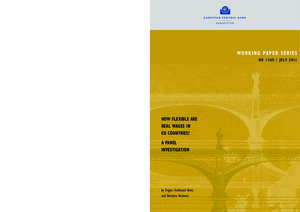How flexible are real wages in EU countries? A panel investigation
"In this paper we estimate the degree of real wage flexibility in 19 EU countries in a wage Phillips curve panel framework. We find evidence for a reaction of wage growth to unemployment and productivity growth. However, due to unemployment persistence, over time the real wage response weakens...
| Main Authors: | , |
|---|---|
| Institution: | ETUI-European Trade Union Institute |
| Format: | TEXT |
| Language: | English |
| Published: |
Frankfurt am Main
2011
ECB |
| Subjects: | |
| Online Access: | https://www.labourline.org/KENTIKA-19177108124919953809-How-flexible-are-real-wages-in.htm |
| Summary: | "In this paper we estimate the degree of real wage flexibility in 19 EU countries in a wage Phillips curve panel framework. We find evidence for a reaction of wage growth to unemployment and productivity growth. However, due to unemployment persistence, over time the real wage response weakens substantially. Our results suggest that the degree of real wage flexibility tends to be larger in the central and eastern European (CEE) countries than in the euro area; weaker in downturns than during upswings. Moreover, there exists an inflation threshold, below which real wage flexibility seems to decrease. Finally, we find that part of the heterogeneity in real wage flexibility and unemployment might be related to differences in the wage bargaining institutions and more specifically the extent of labour market regulation in different country groups within the EU." |
|---|---|
| Physical Description: | 32 p. Digital |

